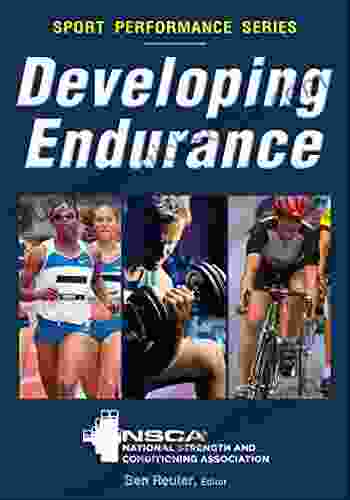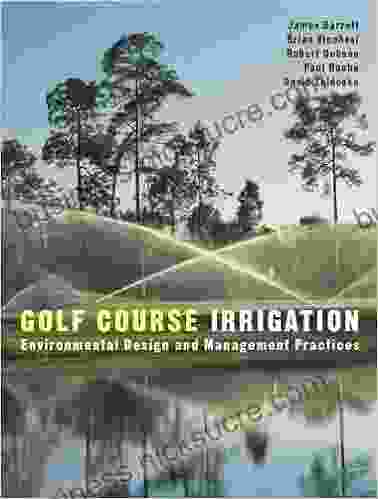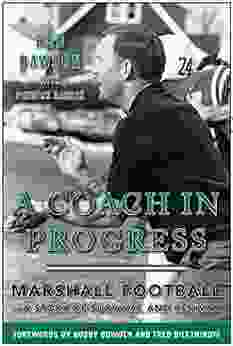Developing Endurance: A Comprehensive Guide for NSC Auditors and Sport Performance Professionals

Endurance, the ability to sustain physical activity over an extended period of time, is a fundamental component of many sports and activities. It is also an important health-related fitness component, as it is associated with a reduced risk of chronic diseases such as heart disease, stroke, and type 2 diabetes.
For NSC auditors and sport performance professionals, understanding the principles of endurance development is essential for providing effective guidance and support to athletes and clients. This article provides a comprehensive overview of endurance development, covering key principles, training methods, nutrition strategies, and recovery techniques.
Endurance development is a complex process that involves multiple physiological adaptations. The most important principles include:
4.6 out of 5
| Language | : | English |
| File size | : | 13278 KB |
| Text-to-Speech | : | Enabled |
| Screen Reader | : | Supported |
| Word Wise | : | Enabled |
| Print length | : | 302 pages |
| Lending | : | Enabled |
- Specificity: Endurance training should be specific to the demands of the activity or sport. For example, runners need to train by running, cyclists need to train by cycling, and swimmers need to train by swimming.
- Progressive Overload: Gradually increasing the intensity and duration of training over time is essential for continued improvement.
- Individualization: Training programs should be tailored to the individual athlete's needs and abilities. This includes considering factors such as age, fitness level, and training experience.
- Periodization: Breaking down the training year into smaller periods, each with a specific focus, can help to optimize results and reduce the risk of overtraining.
- Recovery: Adequate rest and recovery are essential for allowing the body to adapt to training and rebuild muscle tissue.
There are a variety of training methods that can be used to develop endurance. Some of the most common include:
- Continuous Training: This involves performing a single exercise at a relatively constant intensity for an extended period of time. For example, a runner might jog for 30 minutes at a pace that is challenging but sustainable.
- Interval Training: This involves alternating between periods of high-intensity exercise and rest or low-intensity exercise. For example, a cyclist might do a series of 10-minute intervals, each consisting of 5 minutes of hard riding followed by 5 minutes of easy riding.
- Fartlek Training: This is a type of interval training that is more unstructured and varied. It involves changing the intensity and duration of exercise based on the terrain or other factors.
- Hill Training: This involves running or cycling on hills, which forces the body to work harder and develop greater strength and endurance.
- Speed Training: Although speed training is often associated with power and strength development, it can also be beneficial for endurance athletes. By improving neuromuscular coordination and efficiency, speed training can help athletes maintain their pace over longer distances.
Nutrition plays a vital role in endurance performance. The key principles for endurance athletes include:
- Consume a balanced diet: Endurance athletes need to eat a diet that is high in carbohydrates, moderate in protein, and low in fat. Carbohydrates provide the body with the energy it needs to perform, protein helps to repair and rebuild muscle tissue, and fat provides essential nutrients and helps to regulate hormones.
- Hydrate adequately: Endurance athletes need to drink plenty of fluids, especially water, before, during, and after exercise. Dehydration can lead to fatigue, muscle cramps, and other performance-limiting symptoms.
- Consume sports drinks during exercise: Sports drinks can help to replenish electrolytes and carbohydrates that are lost through sweat. They can also provide a boost of energy and help to prevent fatigue.
- Eat a pre-exercise meal: Eating a meal high in carbohydrates 2-3 hours before exercise can help to provide the body with the energy it needs to perform.
- Refuel after exercise: Eating a meal high in carbohydrates and protein within 30 minutes of exercise can help to replenish muscle glycogen stores and promote muscle recovery.
Recovery is an essential part of endurance training. The key principles for endurance athletes include:
- Get enough sleep: Endurance athletes need to get 7-9 hours of sleep per night. Sleep is essential for allowing the body to rest and recover from training.
- Cool down after exercise: Cooling down gradually after exercise can help to reduce muscle soreness and improve circulation.
- Stretch regularly: Stretching can help to improve flexibility and reduce muscle soreness.
- Massage: Massage can help to relieve muscle tension and promote relaxation.
- Active recovery: Active recovery involves performing light exercise on days off from training. This can help to improve circulation and promote recovery.
Endurance development is a complex but essential process for athletes and individuals looking to improve their overall health and fitness. By understanding the key principles of endurance training, nutrition, and recovery, NSC auditors and sport performance professionals can provide effective guidance and support to help athletes reach their goals.
References
- American College of Sports Medicine. (2018). ACSM's guidelines for exercise testing and prescription (10th ed.). Lippincott Williams & Wilkins.
- Burke, L. M., & Deakin, V. (2019). Clinical sports nutrition (5th ed.). McGraw-Hill Education.
- National Strength and Conditioning Association. (2018). Essentials of strength training and conditioning (4th ed.). Human Kinetics.
4.6 out of 5
| Language | : | English |
| File size | : | 13278 KB |
| Text-to-Speech | : | Enabled |
| Screen Reader | : | Supported |
| Word Wise | : | Enabled |
| Print length | : | 302 pages |
| Lending | : | Enabled |
Do you want to contribute by writing guest posts on this blog?
Please contact us and send us a resume of previous articles that you have written.
 Fiction
Fiction Non Fiction
Non Fiction Romance
Romance Mystery
Mystery Thriller
Thriller SciFi
SciFi Fantasy
Fantasy Horror
Horror Biography
Biography Selfhelp
Selfhelp Business
Business History
History Classics
Classics Poetry
Poetry Childrens
Childrens Young Adult
Young Adult Educational
Educational Cooking
Cooking Travel
Travel Lifestyle
Lifestyle Spirituality
Spirituality Health
Health Fitness
Fitness Technology
Technology Science
Science Arts
Arts Crafts
Crafts DIY
DIY Gardening
Gardening Petcare
Petcare Forrest Griffin
Forrest Griffin Lama Zopa Rinpoche
Lama Zopa Rinpoche Josh Sundquist
Josh Sundquist Braeden Baade
Braeden Baade Audrey Sutherland
Audrey Sutherland Bridget Bishop
Bridget Bishop Kindle Edition
Kindle Edition Louise Davidson
Louise Davidson Kimberly Eldredge
Kimberly Eldredge Thomas J Sims
Thomas J Sims Rosalyn Hoffman
Rosalyn Hoffman Scott Morrison
Scott Morrison Briana Wiles
Briana Wiles Ascencia
Ascencia R M Romero
R M Romero Ursula K Le Guin
Ursula K Le Guin Auriane Desombre
Auriane Desombre Toby Neighbors
Toby Neighbors Pete Peterson
Pete Peterson Tom Gilmore
Tom Gilmore Peter Haining
Peter Haining Mike Rohde
Mike Rohde Stuart Ritchie
Stuart Ritchie William L Briggs
William L Briggs Benjamin Alire Saenz
Benjamin Alire Saenz Arthur Bovino
Arthur Bovino Eileen Pollack
Eileen Pollack Michael Tlanusta Garrett
Michael Tlanusta Garrett Brandi Dion
Brandi Dion Tom Holland
Tom Holland Deborah Jiang Stein
Deborah Jiang Stein Christine Stephenson
Christine Stephenson N Katherine Hayles
N Katherine Hayles Nsca National Strength Conditioning Association
Nsca National Strength Conditioning Association David Nicholls
David Nicholls Gavin Chappell
Gavin Chappell E J R David
E J R David Michael Strevens
Michael Strevens Whitney Holcombe
Whitney Holcombe Darren Byler
Darren Byler Jeffery Pfeffer
Jeffery Pfeffer Lechna Baram
Lechna Baram John T Moore
John T Moore T C Edge
T C Edge Michael Phelps
Michael Phelps Don Cherry
Don Cherry R Michael Shaft
R Michael Shaft Scott A Small
Scott A Small Sharleen Woods
Sharleen Woods Michael J Steele
Michael J Steele Brad Edmondson
Brad Edmondson Nichola Luther
Nichola Luther Ed Parker
Ed Parker Emily M Leonard
Emily M Leonard Dr Monique Thompson Dha Lpc
Dr Monique Thompson Dha Lpc Swami Vivekananda
Swami Vivekananda Jim Gray
Jim Gray Robert W Cohen
Robert W Cohen Stephen J Wright
Stephen J Wright Bradford Angier
Bradford Angier William Egelman
William Egelman Nigel Latta
Nigel Latta Be Learning
Be Learning Simon Nasht
Simon Nasht Harvard Business Review
Harvard Business Review John Lawson
John Lawson Lex Luger
Lex Luger Martin E P Seligman
Martin E P Seligman Steven Kotler
Steven Kotler Pat Anvil
Pat Anvil Inc Barcharts
Inc Barcharts Ben Hogan
Ben Hogan Crystal Marie Fleming
Crystal Marie Fleming Derek Prince
Derek Prince Izzy Judd
Izzy Judd D A Saia
D A Saia Art Smith
Art Smith Stuart Shanker
Stuart Shanker Brian Noyes
Brian Noyes Jacqueline Melvin
Jacqueline Melvin Colin Allen
Colin Allen Douglas Adams
Douglas Adams Ash Fortis
Ash Fortis Lucy Coleman
Lucy Coleman Ashley Christensen
Ashley Christensen Ethan Sawyer
Ethan Sawyer Kathy Kochan
Kathy Kochan Martin Shaw
Martin Shaw Mark Beaumont
Mark Beaumont Courtney Loquasto
Courtney Loquasto Jean Haner
Jean Haner Kathy A Zahler
Kathy A Zahler Match
Match Jeff Galloway
Jeff Galloway Rod Heikell
Rod Heikell Lisa Damour Ph D
Lisa Damour Ph D Nystce Exam Secrets Test Prep Team
Nystce Exam Secrets Test Prep Team Jessica Rhodes
Jessica Rhodes Talk In Italian
Talk In Italian Zita Grant
Zita Grant Hrishikesh Joshi
Hrishikesh Joshi Camieyes Inc
Camieyes Inc Roberta Steinberg
Roberta Steinberg Kate Mosse
Kate Mosse Jim Hartnett Pga
Jim Hartnett Pga Paul Henley
Paul Henley Sarah Shephard
Sarah Shephard Brendan Noble
Brendan Noble Christia Spears Brown
Christia Spears Brown Pamparam Kids Books
Pamparam Kids Books Leon James
Leon James Mistletoe Christmas Collection
Mistletoe Christmas Collection Doug Good Feather
Doug Good Feather Elaine Menger
Elaine Menger Joseph A Gallian
Joseph A Gallian Tony Kemerly
Tony Kemerly Rika Lukac
Rika Lukac Tiffany D Jackson
Tiffany D Jackson Robert H Pantell
Robert H Pantell Susan J Fisher
Susan J Fisher Bradley G Stevens
Bradley G Stevens Cassandra Vieten
Cassandra Vieten Michael Grant
Michael Grant Chris Bird
Chris Bird Kate Gruenwald Pfeifer
Kate Gruenwald Pfeifer Gabriel J Connor
Gabriel J Connor Leigh Montville
Leigh Montville Sadie Keller
Sadie Keller Joel Spring
Joel Spring Drew Neil
Drew Neil Dana Frank
Dana Frank Duncan Wells
Duncan Wells Harville Hendrix
Harville Hendrix Katie Shaw
Katie Shaw Jennifer Grouling Cover
Jennifer Grouling Cover Joanne Webb
Joanne Webb Cameran Eubanks Wimberly
Cameran Eubanks Wimberly Kerry Keene
Kerry Keene Kenneth Hayes
Kenneth Hayes Greg Nelson
Greg Nelson W Michael Kelley
W Michael Kelley Erving Goffman
Erving Goffman James R Andrews
James R Andrews Norman Link
Norman Link Richard L Currier
Richard L Currier P T Shank
P T Shank Karin Cadwell
Karin Cadwell Mizuho Kusanagi
Mizuho Kusanagi John H Cunningham
John H Cunningham Zapheria Bell
Zapheria Bell Sarah Burton
Sarah Burton The College Board
The College Board Mariolina Ceriotti Migliarese
Mariolina Ceriotti Migliarese L M Montgomery
L M Montgomery Joanne Rodrigues
Joanne Rodrigues Arturo Escobar
Arturo Escobar Michael Crichton
Michael Crichton Karen M Mcmanus
Karen M Mcmanus Beth Bartolini Salimbeni
Beth Bartolini Salimbeni Peter Goos
Peter Goos John Miller
John Miller Eben Weiss
Eben Weiss Noelle Stevenson
Noelle Stevenson Bret Pettichord
Bret Pettichord S Frederick Starr
S Frederick Starr Arthur Scott Bailey
Arthur Scott Bailey Kindle Interactive Edition
Kindle Interactive Edition Eric J Wittenberg
Eric J Wittenberg Arun Jagannathan
Arun Jagannathan Stephanie Muntone
Stephanie Muntone Huntley Fitzpatrick
Huntley Fitzpatrick Linda Carter
Linda Carter Edwin Monk
Edwin Monk Thomas Kinkade
Thomas Kinkade Echo Heron
Echo Heron Hunter Allen
Hunter Allen Rainbow Rowell
Rainbow Rowell 005 Edition Kindle Edition
005 Edition Kindle Edition Frank Morin
Frank Morin Julie Hall
Julie Hall Sean Gordon Murphy
Sean Gordon Murphy Belinda Norton
Belinda Norton Donald E Brown
Donald E Brown Judy Bartkowiak
Judy Bartkowiak Marlin Bree
Marlin Bree Randy Kadish
Randy Kadish Charles Bowden
Charles Bowden John Small
John Small Charlotte Browne
Charlotte Browne Jeremy L Holloway
Jeremy L Holloway Sharon L Lohr
Sharon L Lohr Jamie James
Jamie James Thomas Henry Huxley
Thomas Henry Huxley Eric Smith
Eric Smith Joe Cermele
Joe Cermele Lindsey Bliss
Lindsey Bliss Nikita Gill
Nikita Gill Stuart Clark
Stuart Clark E Digby Baltzell
E Digby Baltzell Clifford A Pickover
Clifford A Pickover David Kinch
David Kinch Ray Mears
Ray Mears Dan Jenkins
Dan Jenkins Laura Hulleman
Laura Hulleman Brad Walker
Brad Walker Michelle Medlock Adams
Michelle Medlock Adams Richard G Lomax
Richard G Lomax Lore Cottone
Lore Cottone Dustin Lynx
Dustin Lynx Edith Pattou
Edith Pattou Henry Petroski
Henry Petroski Seth Stein
Seth Stein Roger Wiens
Roger Wiens Rachael Lippincott
Rachael Lippincott Rick Curtis
Rick Curtis Robert E Moyer
Robert E Moyer Jeremy Wade
Jeremy Wade Jake Maloney
Jake Maloney Leigh East
Leigh East Pass Your Class
Pass Your Class Manveen Kaur
Manveen Kaur Arthur F Coombs Iii
Arthur F Coombs Iii Jamie Ward
Jamie Ward Brian J Lang
Brian J Lang Laura Navarre
Laura Navarre Ovidiu Calin
Ovidiu Calin Dr Terry Zachary
Dr Terry Zachary Hazrat Inayat Khan
Hazrat Inayat Khan Lynn Clark
Lynn Clark Gerald Pruett
Gerald Pruett Mark Bishop
Mark Bishop Chris Scott
Chris Scott Richard Jefferies
Richard Jefferies Thomas C Tabor
Thomas C Tabor Gareth Southgate
Gareth Southgate Arthur Benjamin
Arthur Benjamin Jakub Kalinowski
Jakub Kalinowski Scott Draper
Scott Draper Laurie Katz
Laurie Katz Mike Carter
Mike Carter Seth Fletcher
Seth Fletcher Mary E Pearson
Mary E Pearson Spanked Teen
Spanked Teen Mark A Runco
Mark A Runco Braun Anthony
Braun Anthony Kay Lynn Wilson
Kay Lynn Wilson Jean Gebser
Jean Gebser Gary Paulsen
Gary Paulsen Kenny Ranen
Kenny Ranen Elizabeth Parker
Elizabeth Parker John Treacher
John Treacher Elaine Howard Ecklund
Elaine Howard Ecklund Jim Fergus
Jim Fergus Hanna Seymour
Hanna Seymour Robert Heidler
Robert Heidler Stefan Klein
Stefan Klein Rob Bignell
Rob Bignell Catherine Tucker
Catherine Tucker Graham Bowley
Graham Bowley Tori Bortman
Tori Bortman Karl F Kuhn
Karl F Kuhn Isolina Ricci
Isolina Ricci Isaiah Helekunihi Walker
Isaiah Helekunihi Walker Skyhorse Publishing
Skyhorse Publishing Elliot Davis
Elliot Davis T Ralph Turner
T Ralph Turner Holly Jackson
Holly Jackson Lorraine Allman
Lorraine Allman Mark Jackson
Mark Jackson Barry H Lopez
Barry H Lopez Hussein A Abbass
Hussein A Abbass Hsiang Shui Chen
Hsiang Shui Chen Rachel Blunk
Rachel Blunk Mark Rosenman
Mark Rosenman Nir Barzilai
Nir Barzilai Hayley Dimarco
Hayley Dimarco Kirkham Ross
Kirkham Ross Gabor Szauer
Gabor Szauer Ray Jarrett
Ray Jarrett Els Van Geyte
Els Van Geyte Kurt Koontz
Kurt Koontz Drew Harris
Drew Harris Simon Singh
Simon Singh Paul Mcghee
Paul Mcghee Jessica Seinfeld
Jessica Seinfeld Mary Ann Ochota
Mary Ann Ochota Julia Ann Clayton
Julia Ann Clayton J P Moreland
J P Moreland Leona Hendrix
Leona Hendrix Martin Hall
Martin Hall Lisa A Alzo
Lisa A Alzo Karyn Siegel Maier
Karyn Siegel Maier Lauren Sullivan
Lauren Sullivan Stefan Burban
Stefan Burban Cornelia Pelzer Elwood
Cornelia Pelzer Elwood Nancy Johnson
Nancy Johnson Red Dawson
Red Dawson Arthur Staple
Arthur Staple Daniel Mccain
Daniel Mccain Jesper Juul
Jesper Juul David Bodanis
David Bodanis Cliff Jacobson
Cliff Jacobson John Vince
John Vince Sophia Glock
Sophia Glock Michel Boivin
Michel Boivin Regina Leeds
Regina Leeds Bob Litwin
Bob Litwin K E Ganshert
K E Ganshert Db King
Db King Scott Cookman
Scott Cookman Aryeh Kaplan
Aryeh Kaplan Beth Shaw
Beth Shaw Deborah Tannen
Deborah Tannen Ashley Rhodes Courter
Ashley Rhodes Courter Rojan Robotham
Rojan Robotham Simone Elkeles
Simone Elkeles Doreen Lenz Holte
Doreen Lenz Holte Rob Rachowiecki
Rob Rachowiecki Gail Reichlin
Gail Reichlin Erik Weihenmayer
Erik Weihenmayer Karim Soliman
Karim Soliman Samira Ahmed
Samira Ahmed Michael Mccarthy
Michael Mccarthy Howard Burton
Howard Burton Peggie Hall
Peggie Hall Milo Kemp
Milo Kemp William Henry
William Henry Arthur Beiser
Arthur Beiser Rae Yang
Rae Yang Maggie Tokuda Hall
Maggie Tokuda Hall Ruth Ehrhardt
Ruth Ehrhardt Eighth Edition Kindle Edition
Eighth Edition Kindle Edition Al Sweigart
Al Sweigart Gene Kugach
Gene Kugach Sara Hopkinson
Sara Hopkinson Marc Macyoung
Marc Macyoung Jada Fisher
Jada Fisher Kirstie Mclellan Day
Kirstie Mclellan Day Bill Chambers
Bill Chambers Mito Bessalel
Mito Bessalel Thomas Berry
Thomas Berry Mercedes Lackey
Mercedes Lackey Brittney Wilson
Brittney Wilson Katie Banks
Katie Banks James Poskett
James Poskett Philip Pullman
Philip Pullman Grace Stockholm
Grace Stockholm Gillian Hutchinson
Gillian Hutchinson Yvon Chouinard
Yvon Chouinard Pittacus Lore
Pittacus Lore Elizabeth King
Elizabeth King Conrad Bauer
Conrad Bauer Becky Goddard Hill
Becky Goddard Hill Darren Palmer
Darren Palmer Logan Duvall
Logan Duvall Mike Acker
Mike Acker Richard F Larkin
Richard F Larkin Sarah Allen
Sarah Allen Elizabeth E Wein
Elizabeth E Wein Fred Zeglin
Fred Zeglin Nadine Slavinski
Nadine Slavinski Jennifer Love
Jennifer Love Ronald D Siegel
Ronald D Siegel Paola Roig
Paola Roig Kris Wilder
Kris Wilder Louis Berney
Louis Berney Kate Gladdin
Kate Gladdin Jessica Grogan
Jessica Grogan Ralph H Hruban
Ralph H Hruban Paul M Sutter
Paul M Sutter Steve Sheward
Steve Sheward Charlie Craven
Charlie Craven The Secret Cyclist
The Secret Cyclist Cal Peternell
Cal Peternell Michael Angelo Costa
Michael Angelo Costa Margarita Engle
Margarita Engle Jamie Andrews
Jamie Andrews Ingrid Kohn
Ingrid Kohn Sparknotes
Sparknotes David Hatcher Childress
David Hatcher Childress Kami Garcia
Kami Garcia Chris Hart
Chris Hart Malcolm Russell
Malcolm Russell John L Crassidis
John L Crassidis Marcia K Anderson
Marcia K Anderson Denny Krahe
Denny Krahe Vijay Vad
Vijay Vad Rachel Cathan
Rachel Cathan Dave King
Dave King Kathy Charner
Kathy Charner Michael R Ange
Michael R Ange Claire Hartfield
Claire Hartfield Ryan Stramrood
Ryan Stramrood 11th Edition Kindle Edition
11th Edition Kindle Edition Alexander Boxer
Alexander Boxer Jeff Seidel
Jeff Seidel Keith Bateman
Keith Bateman Stephen Jay Gould
Stephen Jay Gould Paul Chapman
Paul Chapman Susan David
Susan David Daniel Mersey
Daniel Mersey Benny Lewis
Benny Lewis Benny A Wit
Benny A Wit Mike Mattesi
Mike Mattesi Justina Ireland
Justina Ireland Matt Kalman
Matt Kalman Aaron Linsdau
Aaron Linsdau Kathleen Cushman
Kathleen Cushman Isaac Newton
Isaac Newton Thomas Teselli
Thomas Teselli Lisa Crayford
Lisa Crayford Ransom Riggs
Ransom Riggs Paul Levy
Paul Levy Jenny Hall
Jenny Hall Walter Martin
Walter Martin Scott Hartshorn
Scott Hartshorn Wayne Teasdale
Wayne Teasdale Robert K Yin
Robert K Yin Chris Bonington
Chris Bonington Jennifer Comeaux
Jennifer Comeaux Tracy Zager
Tracy Zager Jason Hanson
Jason Hanson Nancy Springer
Nancy Springer Irene Mchenry
Irene Mchenry Carolyn Nones Vazquez
Carolyn Nones Vazquez Lance Gettler
Lance Gettler Warren F Kimball
Warren F Kimball Jessica Mccrory Calarco
Jessica Mccrory Calarco Dave Seminara
Dave Seminara George Sandford
George Sandford Bryce M Towsley
Bryce M Towsley Joyce Goldstein
Joyce Goldstein Charlie Portlock
Charlie Portlock Sarah Leah Chase
Sarah Leah Chase Eliza Reid
Eliza Reid Larry Krieger
Larry Krieger Lisa Cordeiro
Lisa Cordeiro Brett Topel
Brett Topel Marie Bigelow
Marie Bigelow Jim Parks
Jim Parks Charles E Schaefer
Charles E Schaefer Pat Falvey
Pat Falvey Mark Powell
Mark Powell Jemma Foster
Jemma Foster Roz Maclean
Roz Maclean Dawn Davenport
Dawn Davenport William G Tierney
William G Tierney Nicholas Marsh
Nicholas Marsh Arthur Bochner
Arthur Bochner Tina Olton
Tina Olton Robin Theiss
Robin Theiss Hernan Chousa
Hernan Chousa Isaac Asimov
Isaac Asimov Asato Asato
Asato Asato Meg Meeker
Meg Meeker Gregory Hodges
Gregory Hodges Hans Paetz Gen Schieck
Hans Paetz Gen Schieck Milli Hill
Milli Hill Stacy Lynn Harp
Stacy Lynn Harp Christine Conners
Christine Conners Dawn Hogue
Dawn Hogue Chris Algieri
Chris Algieri Robert R Harr
Robert R Harr Ricardo D Palacios
Ricardo D Palacios Dan Benardot
Dan Benardot Brian Cole
Brian Cole Jon Patrick Hatcher
Jon Patrick Hatcher Pat Mullaly
Pat Mullaly Barack Obama
Barack Obama Stan Skrabut
Stan Skrabut Prem Carnot
Prem Carnot Gong Chen
Gong Chen Lynelle Schneeberg
Lynelle Schneeberg Sofia Price
Sofia Price Stephanie Jeanette Bradley
Stephanie Jeanette Bradley Gerry Donohue
Gerry Donohue Horace G Hutchinson
Horace G Hutchinson Lsatmax Lsat Prep
Lsatmax Lsat Prep James Lawson
James Lawson Pat Dooley
Pat Dooley Stefan Ecks
Stefan Ecks Lynn Arave
Lynn Arave Isle Osaki
Isle Osaki Penny Simkin
Penny Simkin David Dibenedetto
David Dibenedetto Ben Romans
Ben Romans Mark Zegarelli
Mark Zegarelli Anni Daulter
Anni Daulter Brian Johnson
Brian Johnson Gerry Cheevers
Gerry Cheevers Richard Miller Adi
Richard Miller Adi Richard Hartley
Richard Hartley Karen Gravelle
Karen Gravelle Jay Gitomer
Jay Gitomer Susan A Milstein
Susan A Milstein Janice Mcdonald
Janice Mcdonald Itzhak Bentov
Itzhak Bentov Drew Monkman
Drew Monkman Susan Radulovacki
Susan Radulovacki Patrick M Andendall
Patrick M Andendall Eric S Raymond
Eric S Raymond Kathie Lee Gifford
Kathie Lee Gifford Asanaro
Asanaro Payal Khurana
Payal Khurana Lisa Taddeo
Lisa Taddeo Douglas Fisher
Douglas Fisher
Light bulbAdvertise smarter! Our strategic ad space ensures maximum exposure. Reserve your spot today!
 Ross NelsonFollow ·18.7k
Ross NelsonFollow ·18.7k David BaldacciFollow ·6.7k
David BaldacciFollow ·6.7k Fyodor DostoevskyFollow ·17.6k
Fyodor DostoevskyFollow ·17.6k Gabriel BlairFollow ·5.4k
Gabriel BlairFollow ·5.4k Owen SimmonsFollow ·4.4k
Owen SimmonsFollow ·4.4k Vince HayesFollow ·2.6k
Vince HayesFollow ·2.6k Cortez ReedFollow ·2.3k
Cortez ReedFollow ·2.3k Rex HayesFollow ·17.7k
Rex HayesFollow ·17.7k

 Braden Ward
Braden Ward125 Recipes to Embark on a Culinary Journey of Virtue and...
Embark on a culinary...
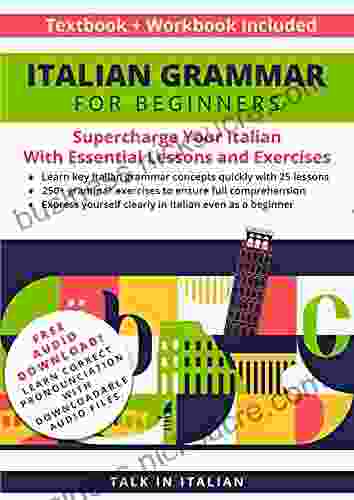
 Benji Powell
Benji PowellItalian Grammar for Beginners: Textbook and Workbook...
Are you interested in...

 Joseph Foster
Joseph FosterThe Suffragette Journey to Cuba: A Long and Winding Road...
The suffragette...
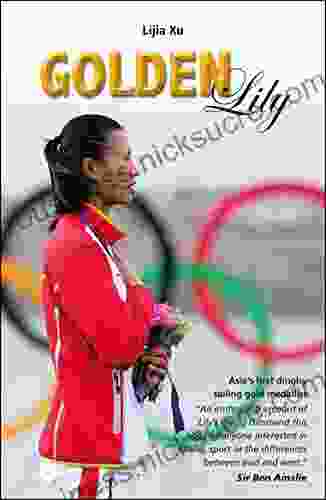
 Dustin Richardson
Dustin RichardsonAsia First Dinghy Sailing Gold Medallist Making Waves
Keerati Bualong is a Thai sailor who made...

 Aleksandr Pushkin
Aleksandr PushkinRediscover the Creator's Purpose for Men: Embracing...
: The Need for a Rediscovery In an era...
4.6 out of 5
| Language | : | English |
| File size | : | 13278 KB |
| Text-to-Speech | : | Enabled |
| Screen Reader | : | Supported |
| Word Wise | : | Enabled |
| Print length | : | 302 pages |
| Lending | : | Enabled |


